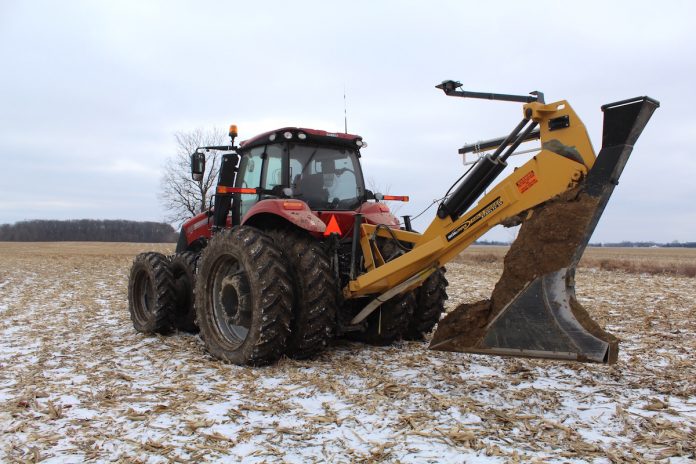Now that most crops are coming off of fields everywhere, it is a good time to begin field tile maintenance and repairs. Before planting crops in the spring is another good time to check your tile lines. You can also check them during or right after a large rain event. This will give you the best picture of what is happening.
If tile lines are checked, maintained and repaired correctly, they will last their life expectancy or even outlive them. I’ve made several field visits to look at wet spots or blowouts in fields and discovered it is still old clay tile. If I had to bet, I’d say that farmer or the ones prior to always checked and maintained their lines, inlets, outlets and junction boxes.
Many of these checks are done visually — not by driving by but by getting out and walking the fields looking at inlets and outlets. Look for wet spots, holes, erosion along a line or even small seeps.
• One quick and easy way for tile lines to become plugged is from rodents crawling up into the outlets because a rodent guard was not installed.
• Remove all trash and debris buildup at the inlets and outlets.
• Keep woody vegetation at least 5 feet away from the outlets.
• Remove trees such as willows, cottonwoods, elm and soft maples from the surrounding area of subsurface drains. These types of trees will seek water and can get into the tile and break it or plug it up.
• Maintain a splash pad of Class C rip rap at the outlet to reduce erosion.
• Look for settling where the lines were installed to maintain 24 inches of cover over the subsurface drains. Driving heavy equipment over settled areas can crush the pipe.
Another very important thing to have is tile blocks or temporary flow-blocking devices if the tile lines become polluted from land application of manure. Make sure to maintain setbacks from inlets or waterways while applying manure.
Avoid applying manure while the soil is saturated, and the tiles are already flowing water. This will also alleviate the chance for compaction and potentially crushing the pipe. If working in an area where iron ochre is present in the soil, install a cleanout structure to provide access for cleaning equipment.
(Dylan Stine is a district technician with the Tuscarawas Soil & Water Conservation District. You can reach him at 330-339-7976.)













